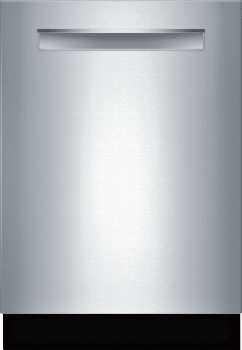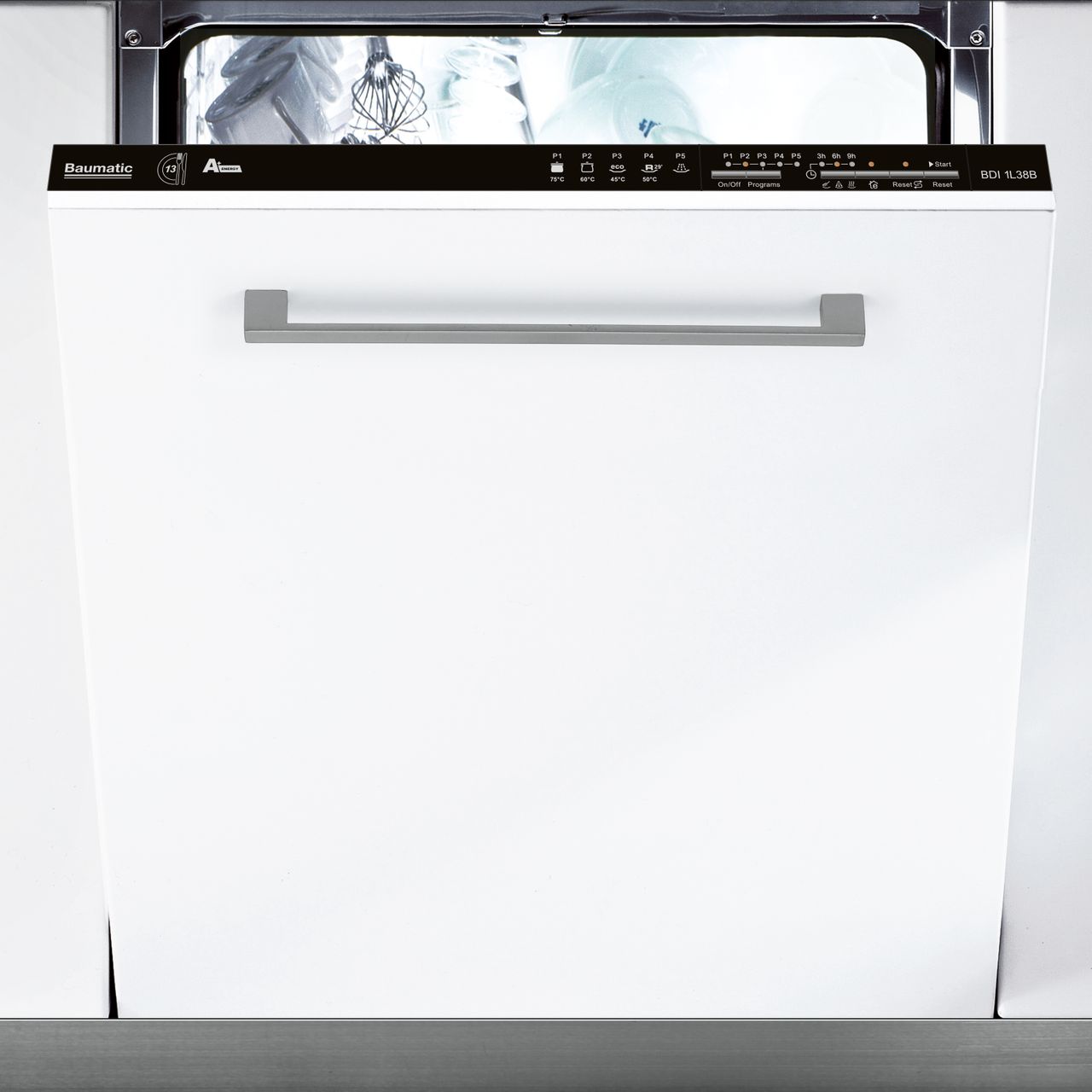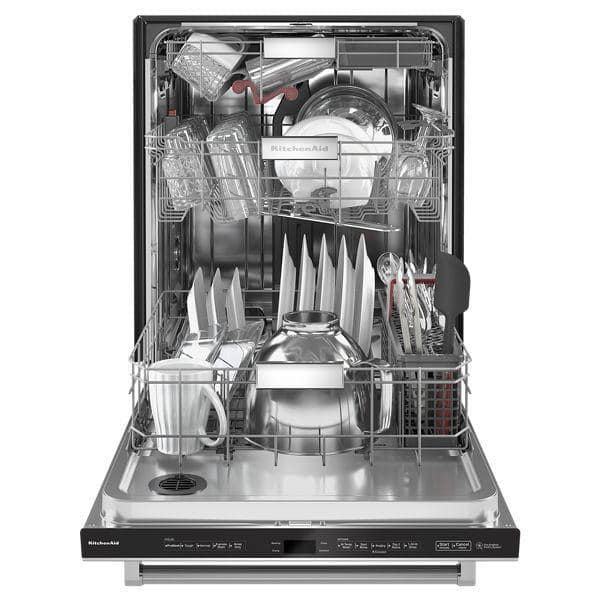Bosch Serie 6 SMV68ND00G Fully Integrated Standard Dishwasher – Stainless Steel Control Panel with Fixed Door Fixing Kit – A+++ Rated
13 place settings – great for medium-sized households. 35 minute quick wash – great if you’re in a hurry. LED projects cycle run time onto your floor. Minerals make drying faster and more energy-efficient. Dimensions (cm) – H81.5 x W59.8 x D55.
Never worry about dirty dishes ever again with this clever integrated dishwasher from Bosch. It has enough space to fit 13 place settings, which is ideal for medium-sized households. With a Quick Wash of just 35 minutes, you’ll have clean bowls in time for popcorn before sitting down to watch a film. And you don’t have to put your ear to the machine to know if it’s still washing: the TimeLight LED display helps you keep track of the minutes by projecting the run time on the floor. And it’ll dry everything to perfection – including your favourite plastic lunchbox – thanks to the unique Zeolith technology. Using natural minerals, it makes dishware dry and cupboard-ready after a cycle.
- 13 place settings – great for medium-sized households
- 35 minute quick wash – great if you’re in a hurry
- LED projects cycle run time onto your floor
- Minerals make drying faster and more energy-efficient
- Dimensions (cm) – H81.5 x W59.8 x D55
Additional information
| Dimensions | (H)81.5 x (W)59.8 x (D)55.0 |
|---|---|
| Annual Water Consumption | 2156 Litres |
| Quick Wash Time | 35 Minutes |
| Manufacturer Warranty | 5 Year |






by Sandra
I love Bosch and the last one lasted 11 years . The only minus on this product is the basket. My last one I could collapse all the rails in both baskets meaning I had great flexibility when I had larger/bigger items to clean. It meant I could maximise my load reducing the amount of water usage especially being on metered water. For the price I’ve paid for this , I thought fully collapsible rails in both baskets would be standard not just 1 longer rail on the bottom and 1 smaller rail on the upper basket . Apart from that I love all the other features. It’s quiet, a good range of features, and the best is seeing the time left projected onto the floor
by Rob
This is a big upgrade from our 12 year old Beko dishwasher. The cleaning performance is much improved even with the same detergents. Also hugely more quiet. Don’t notice the “zeolith” drying making much of a difference though, still some pooled water in bases of mugs. Bit disappointed not to get accessories like the long knife tray, adjustable cutlery drawer and small item clips which are shown in the manual even at this ~£800 price point. The layout is pretty flexible, although the cutlery drawer does remove some space from the upper rack. Normal pint glasses fit fine at the sides but any oversize pint glasses won’t fit, unless you lower the upper rack (this is really easy to do but then you will not be able to fit in large dinner plates below). I installed this myself and it was reasonably straightforward, with the integrated door fixing part the most time-consuming and easy to get wrong. Our cabinet door was too tall for the spec (max height is 725mm) so had to offset the template a bit (seriously recommend you carefully use a cramp to hold the cabinet door to the front rather than the supplied stickers, in case you make a mistake and have to re-do it) and brace the top of the dishwasher against the underside of the cabinet as it has to then sit lower in the space – luckily the packaging of the dw comes with two conveniently sized pieces of wood which were perfect. Only other potential snag is the intake hose has a big sensor block at the attachment point, so make sure you have about 15-20cm of space in line with your water pipe connector.
by Duncan
quiet, efficient, good quality and easy to install.
by Devin
Fantastic dishwasher with the digital display on the floor updating you on the cycle status along with touch and self opening door!… fantastic.
by Majeed
Love it !So pleased I opted for this model even though it was more expensive than I had decided to spend. So quiet on all the washes I have tried so far. Wasn’t sure I would like the cutlery tray but I find it cleans better than the basket I had with my old dishwasher. Easy to use and plenty of space with the tray for cutlery at the top. Recommend this model .
by Dean
Solid dishwasher – easy to fit and you can turn off the noises so it doesn’t bother you.